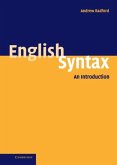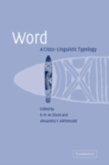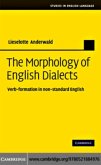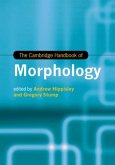This new edition is concerned primarily with the learned vocabulary of English - the words borrowed from the classical languages. It surveys the historical events that define the layers of vocabulary in English, introduces some of the basic principles of linguistic analysis, and is a helpful manual for vocabulary discernment and enrichment. The new edition has been updated with a discussion of the most recent trends of blending and shortening associated with texting and other forms of electronic communication and includes a new classification of the types of allomorphy. It discusses important topics such as segment sonority and the historical shifting of long vowels in English, and includes a new section on Grimm's law, explaining some of the more obscure links between Germanic and Latinate cognates. Exercises accompany each chapter and an online workbook contains readings and exercises to strengthen knowledge acquired in the classroom.
Dieser Download kann aus rechtlichen Gründen nur mit Rechnungsadresse in A, B, BG, CY, CZ, D, DK, EW, E, FIN, F, GR, HR, H, IRL, I, LT, L, LR, M, NL, PL, P, R, S, SLO, SK ausgeliefert werden.









